Interviews, Surf culture, WomenI’ll Catch This Wave Because I Want To

Can Women Escape The Male Influence When Surfing? A Spanish Case Study
“When I saw myself surfing, I realised that a lot of my way of behaving, a lot of how I felt in the water, came from what I saw in men. My references in surfing were all male.”
Whilst the above quote was spoken by just one woman, it is safe to say that it will resonate with thousands, if not millions, of women. This feeling isn’t at all fanciful or far-fetched when considering that, since the nineteenth century, practising sports has been a way to promote a masculine character and modus vivendi; a form of leisure that ostracised women to the point of rendering them inferior; a social configuration that facilitated the masculine paradigm we still see across many disciplines and practices today. However, if thinking back to the pre-colonial era in Hawaii, a time when wahines filled the line-up and when respect was earned by how gracefully one danced on the waves not by one’s gender, it does seem odd that female surfers would struggle to unfetter themselves from the influences of their male counterparts. Actually, it only seems odd if overlooking how definitively the arrival of colonisers stripped women of their freedom to ride waves, and how much this and other historical events have contributed to categorising surfing as another sport where men dictate what is authentic, as well as how women should perform, behave, look like, and enjoy surfing.
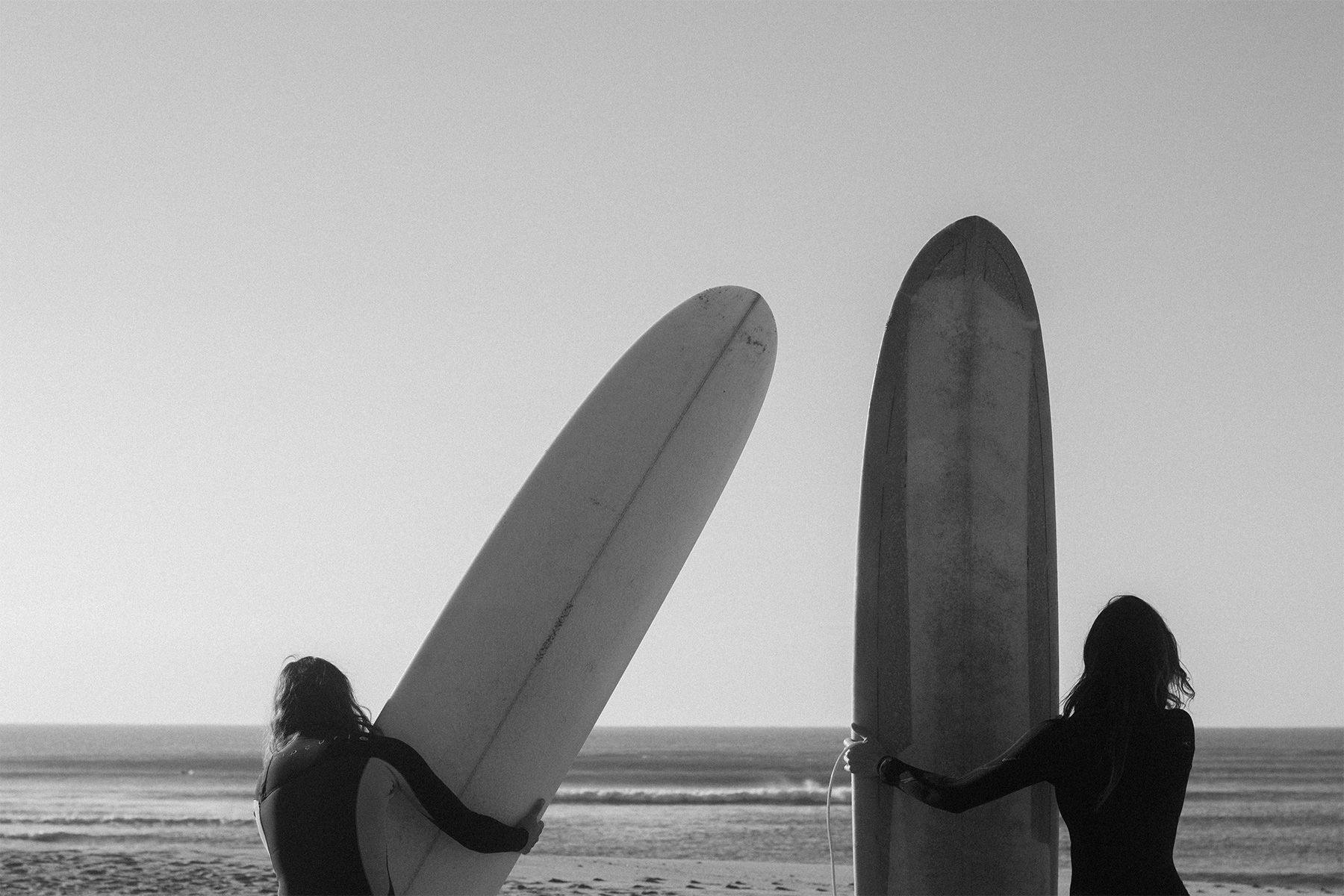
Paloma Sanz-Marcos, the woman who spoke the above words, is a lecturer of Marketing and Communications at the University of Cadiz, Spain. She is also a passionate, first-generation surfer, and as a Spanish waterwoman with a knack for and the access to investigation, has observed the subtle ways in which her country’s history affects hers and other women’s experience of surfing and sports in general.
In Spain, the place of women in sports – practically non-existent until the 1920s due to the tacit fear of losing their femininity by compromising their physicality – was been further held back by the Franco regime (1939-1975) and its Catholic inclinations which relegated women to the sexist role of housewife. It was only in the late 60s and early 70s, following the 1966 Press Law and preceding the arrival of democracy, that Spanish women started to gain access to the world of sports.
When it comes to the beginnings of women’s surfing in Spain, however, very little is known. The little that is known points to how the first Spanish female surfers were brought into contact with surfing by their brothers and partners, but that, given the lack of references, resources and encouragement from the surfing community and associations, they struggled to find the stimulation and space to carry on riding waves.
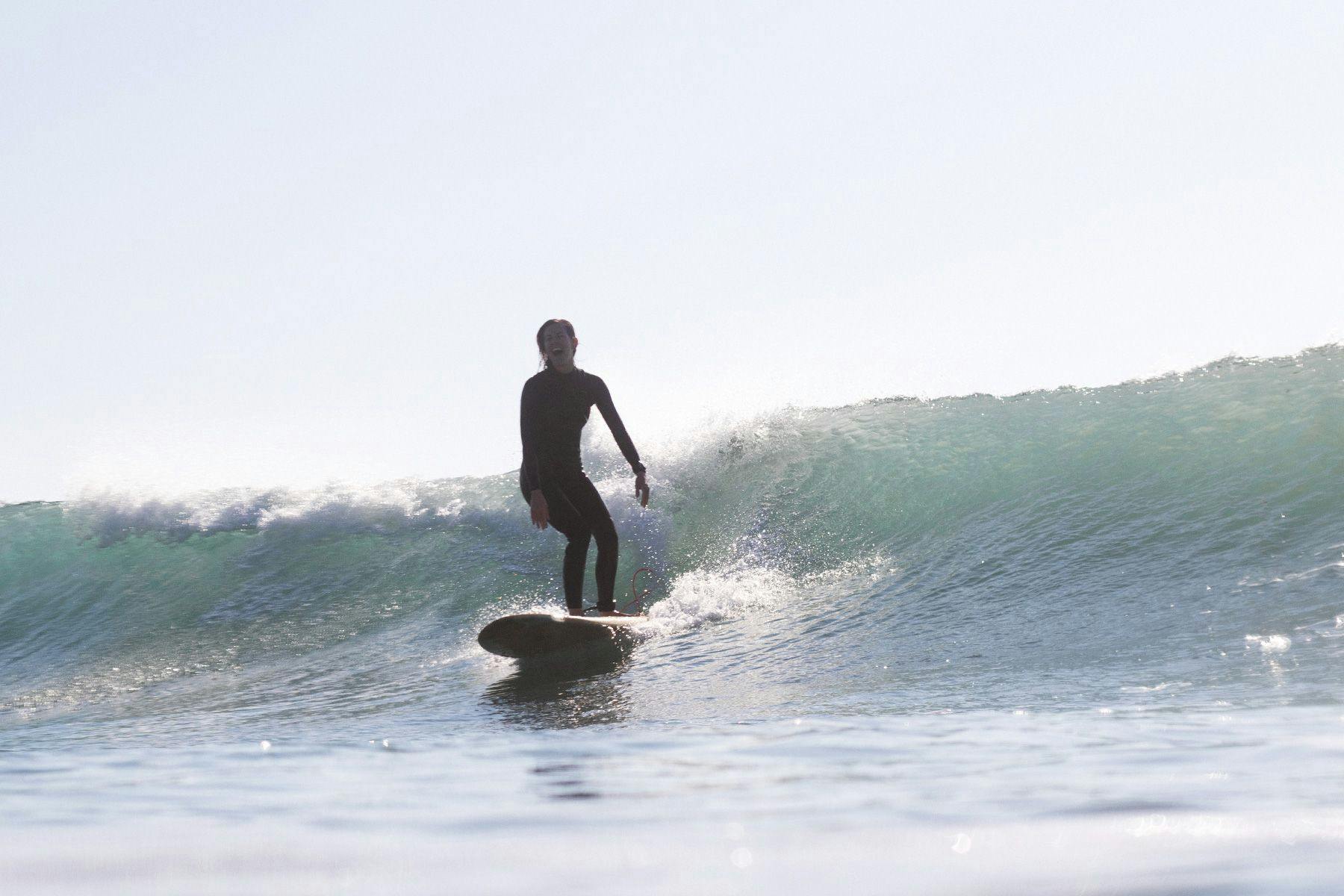
In her latest paper, aptly named Can women escape the male influence when surfing?, Paloma delves into the perceptions of women surfers in relation to male influences to find out just how determinant these androcentric cultural assumptions are in how Spanish female surfers experience surfing. For that, she carried out an ethnographic work consisting of in-depth interviews and informal conversations with female surfers at the beach of El Palmar in Cádiz, along with recorded observations for a period of six months. Results showed that, indeed, women surfers in the south of Spain feel the weight of male standards, and that these cultural preconceptions, together with the smaller number of women in the line-up, often lead to a feeling of marginalisation. But also, and perhaps more remarkably, that this marginalisation is partly generated by women themselves, who, in their quest (conscious or unconscious) to fit into the masculine criteria, end up undermining their own identity as surfers.
“Sometimes, when a new girl paddled out to our spot, I caught myself hoping she didn’t surf well; I often felt like I was competing with my sisters and I didn’t know why! Eventually, I was like, ‘What the heck, why am I thinking like this?!’ Then I realised that many of these thoughts emerged because of the influence of men. I think that men are more aggressive in the water, they are very competitive, they are always telling you what you should and shouldn’t do, how to surf ‘better,’ what boards to use…so in the end, the way women surf turns out to be largely guided by the way men surf.”
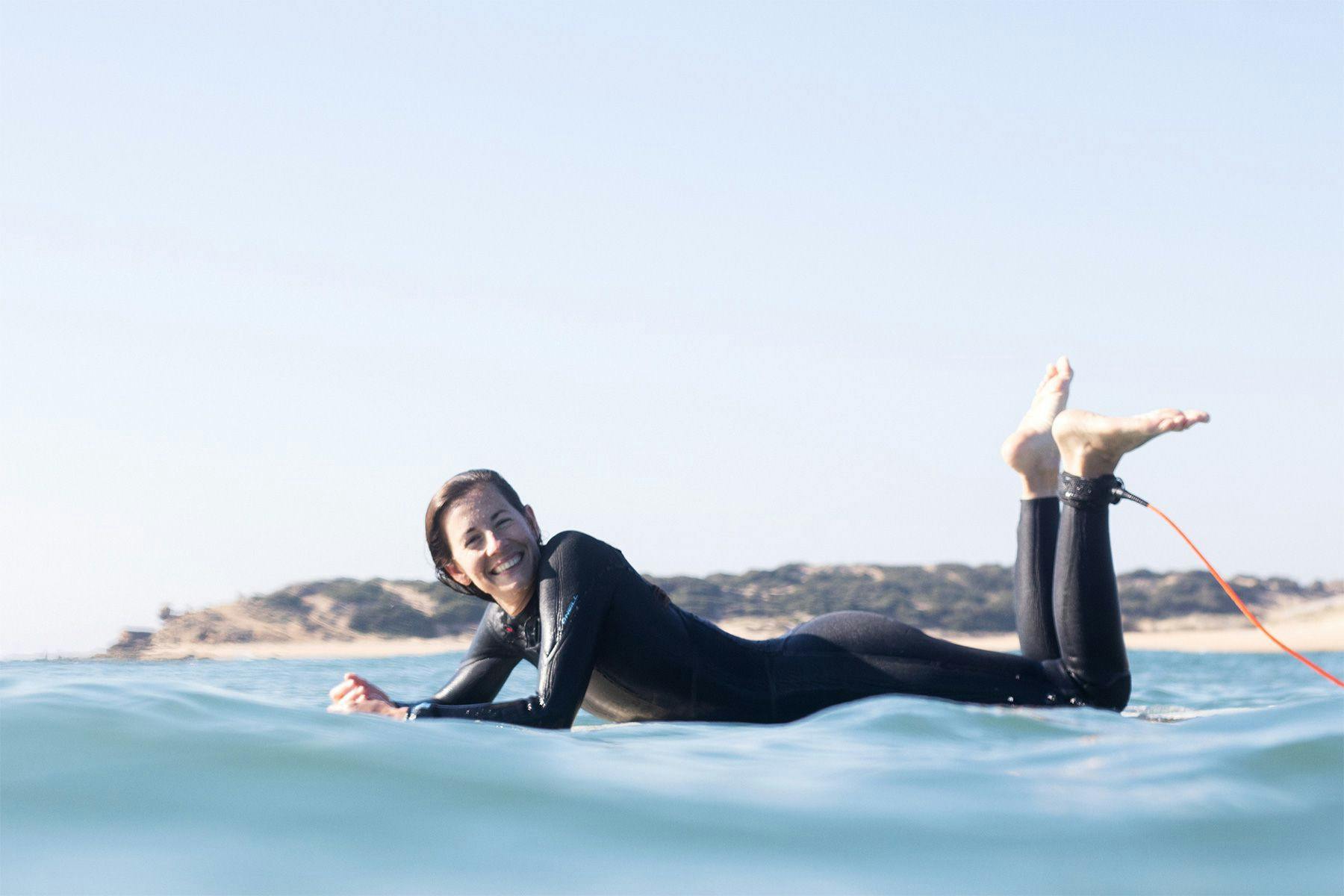
Surf Simply chatted with Paloma over the course of a few days to find out more about her research and her views of femininity in surfing. But also, more broadly, to further the conversation on gender equality and discuss the importance of reflection, of picking concepts apart, of reviewing prejudices and values that have, to a large extent, come to shape a status quo in surfing that remains far from ideal. What follows is the transcription of the conversation; the text has been translated from Spanish and edited for readability.

Over the last few years, there has been an exponential increase in conversations about gender (in)equality in the world of surfing. Given that your research adds to the conversation, can you please tell us why you think it’s important to talk about these issues now?
First of all, I think it’s important to highlight that feminism has been a very important movement for bringing some problems to light that we women have been having throughout our lives. I think that feminism has allowed society to know that women have faced a lot of problems – be it work-related, cultural, social – that might have not surfaced if so many women hadn’t spoken out. But to me, the topic of women in surfing is something that I wouldn’t pigeonhole to any movement; it’s important to contextualise it within feminism, but I think this goes beyond it. More specifically, there are cultural and social factors that have made it so that women haven’t had (or have only had very few) female references in surfing – and that is what I talk about in the article.
For instance, when I started surfing, only a handful of female surfers were being featured in magazines and other media outlets (there was no Instagram), namely Cori Schumacher, Lisa Andersen, and a couple more. But besides the issue of how little they were featured, there was the issue of how they were featured. I remember a front page with Lisa Andersen that said “Lisa surfs better than you”. It said so in a way that mocked men, meaning that a woman can surf better than you. And it is this tendency to compare what both encapsulates and potentiates the whole issue of gender dynamics in surfing.
So to answer your question… Sure, there has been a lot of noise around the difficulties that women face when competing. But what interested me was to talk more about the behaviour in the water. And what I have observed is that when a woman surfs radically, aggressively, doing tricks similarly to the way men do, they are more valued. Which is to say, a girl surfs well when she does a trick or manoeuvre that looks like what a man would do (surely you have heard the expression “she surfs like a man”). It seemed to me that the standard of men is the “good one”, that in order to surf well you have to look like a man surfing. And that’s precisely what I wanted to point out with the research: because of the current standard, women often think that their surfing is not “the good one”.
You’ve interviewed a lot of women for this research. Was there a particular comment, point of view, or story that stood out?
One curious thing that happened was that, when I talked about the objective of the research, there was one particular woman, who in addition is my friend, that didn’t understand what I was asking her. She didn’t know what I meant by “the difference between men and women”; she didn’t see it clearly at all! She said she had never witnessed differences, that this notion was very strange. This comment definitely caught my attention.
Otherwise, the common reflection among participants was that indeed these differences are real. In fact, many of them went one step further and asked themselves – And why does that happen? In the end, their answers helped me to reach conclusions such as those I mentioned previously about the problem being the lack of references and, consequently, the fact that oftentimes women don’t seem to be able to develop confidence in themselves when practising a sport which is still very much pigeonholed as a men’s sport.
Another thing that struck me as important was finding out that there is a lot of competitiveness among women in the water, a type of competitiveness that emerges without us noticing, in an unconscious way. On many occasions, participants said that it was surprising to see how they behaved toward a new girl that happened to come to their local spot, checking to see whether she surfed well or not. From this, I concluded that we women are – or can be – highly competitive in the water. Sure, this is probably also the case with men. But it struck me as very curious how many of us women criticise each other, sometimes in a very unfair way.
Yet, perhaps more than anything, I was surprised and grateful for how, in the case of some participants, these reflections changed their perception of their own behaviours in the water, inciting them to consider making a change. It was a beautiful thing and very rewarding, to realise that the research came to mean something for others, that I could help to highlight certain themes that are important to change.
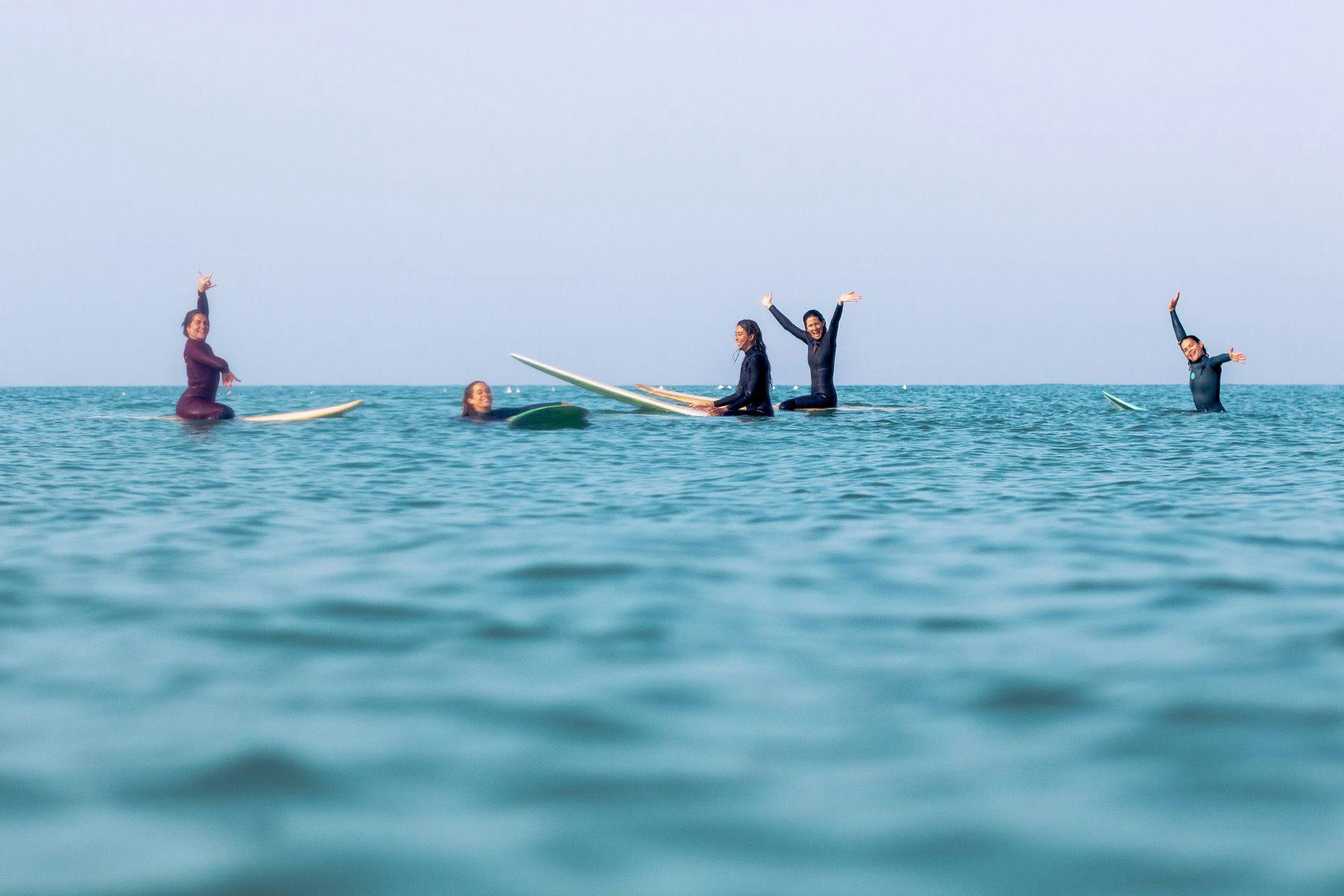
Speaking of this competitiveness among women and what you mentioned about the standard of male surfers being the “good one”, in the paper you quote Olive (2016): “What is really remarkable is that women are replicating established cultural understandings that marginalize themselves, leading to a phenomenon whereby women face an oppressor-oppressed contradiction from which it is difficult for them to escape. Female surfers (oppressed) end up internalizing the dominant group’s values (oppressor), which leads them, in their quest for liberation, to an identification with their opposite. The oppressed who have not reflected rigorously on their condition find in oppression their path to liberation. That is, the oppressed commonly believe that the way out of their oppressed state is to become the oppressor, so that women themselves may perpetuate male performance as the correct way or style of surfing.”
A couple of curious things on that. For instance, if a girl paddles out with “too short a wetsuit,” she is more often than not looked at badly, as in what this girl wants is to draw attention and look pretty in the water, and you can’t look pretty in the water and surf well – because men don’t do that. So I think that we women have developed this tendency to criticise other women both when they express their femininity more and when they surf more aggressively, more like men. And I think this happens “naturally” – no one is to blame for that. That’s why I said feminism is important up until a certain point. Because, in this context, it’s no one’s fault. What happens is that we simply don’t have enough female role models in surfing, and because of this we think that all that looks like what we usually see – that is, all that looks manly – is “the good one”. Instead of settling for that, I think we should try to validate and value other types of surfing – including the types of surfing we women do.
“There is a kind of belief that as soon as you start to improve you start to move to the male side and it gives you the right to discredit women. It’s a product of machismo. When you’re good, you’re a man”
Participant 5
“I’ve even put on a swimsuit to surf and then cover myself up so as not to attract attention and so that no one looks at me.”
Participant 7
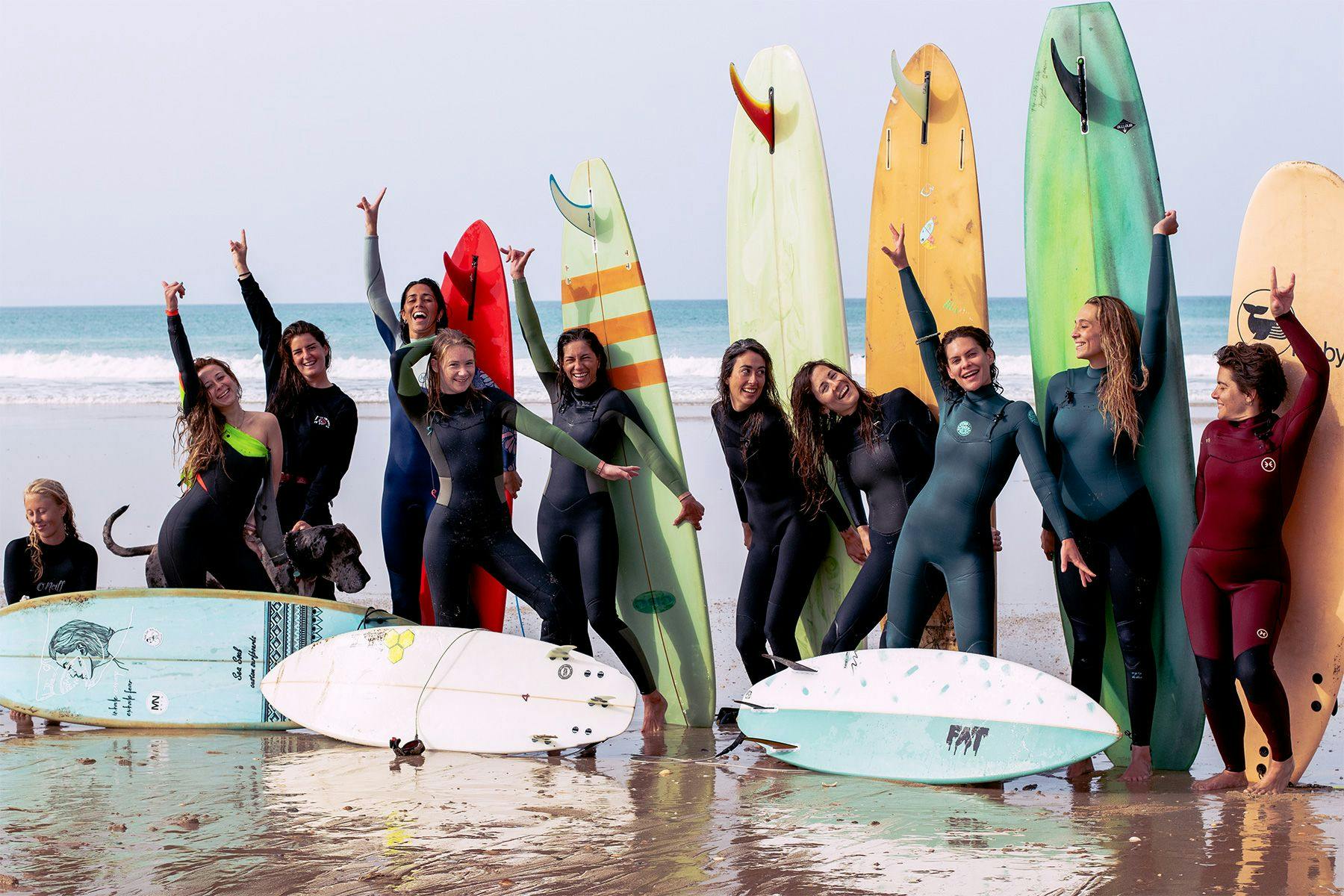
In the introduction to the paper, you highlight how most studies that touch on women’s relationship with surfing have focused on North America, Australia, or Hawaii. With that in mind, how would you say the Spanish surfing culture differs from these other places?
There is something very different between Spain and other countries, and I think the most important factor is that in Spain we don’t have a surfing culture as ingrained as other countries. For example, in the USA a family can have several generations of surfers; you can meet people whose great-grandparents used to surf. Here in Spain, this is very difficult. I would dare say that there are three or four generations tops. And this has consequences in and out of the water.
On the other hand, people don’t behave as they should in the water; there isn’t a surfing culture in terms of behaviours, education, values, etc. And this sometimes proves a hindrance for surfing in Spain. This becomes evident when I travel overseas to different surf spots, even those with hardcore localism or that are packed full of people. People are treated differently in the water, there is a more positive ambience. Whereas in Spain, it is not uncommon to witness shitty attitudes in the water – I think that’s because we lack a defined surfing culture.
From all the literature you have reviewed, what were the most interesting and/or revealing findings you came across concerning the role and place of women within Spanish surf culture?
Well, this answer is easy: There is no literature available about surfing and women, neither in the context of male hegemony nor in the Spanish context – unfortunately. You can read other articles about surfing in Spain, like the work of Daniel Esparza. But there is nothing about the topic of surfing and women. This is not a very popular topic in academia – especially not in Spain. Nevertheless, research about women and surfing in other contexts there are plenty. Some of the most important authors are Cassie Comley, Krista Comer, Rebecca Olive, Belinda Wheaton and Becky Beal, among others.

In your opinion, how can/should gender-related issues found in the water influence the wider conversation about gender equity out of the water?
Indeed, gender-related issues that occur within surfing come to influence people’s lives out of the water. I’ll give you an example. I think that, nowadays, if a man decided to dance classical ballet, this would kind of represent the opposite of the surfing scenario we’re discussing, in the sense that classical ballet is something more typical of women, and surfing is more typical of men. I believe that this sort of thing influences a lot both women and men, both in and out of the water; in fact, the paper closes by saying that men can also feel affected by these themes and that one of the lines of inquiry to pursue would be the perceptions of men regarding the findings. In my mind, we have a social responsibility not only as surfers but as people, culturally speaking, when positioning ourselves in gender-related matters. And not only about gender. There was extensive mention in some articles I’ve found of discrimination all sorts of discrimination in the water. And this obviously affects people, one way or another.
Similarly, what would you say is the role/responsibility of surfers and surfing culture in deconstructing masculine paradigms?
I think we have a responsibility to welcome all types of surfers, independently of their gender or their sexual orientation – or whatever other factor it may be. I reckon it’s important that we somehow blur this line of gender and that we value the surfer as a surfer, as a person who practices a sport – period. Beyond the social aspect, it would be interesting to encourage any surfer, woman or man. But not only in surfing! To come back to the example of classical ballet: encourage any men that do it, regardless of the sport being mostly practised by women. I believe it’s important that we stop assuming that such or such sport is specific to a particular gender, and I think that the way to do that would be to value surfers in an equalitarian way. Indeed, this is something that is being done, like scoring both women and men similarly, and that in competitions they get the same or similar money prizes. But I think each and every one of us have our share of responsibility in trying to shift these dynamics.
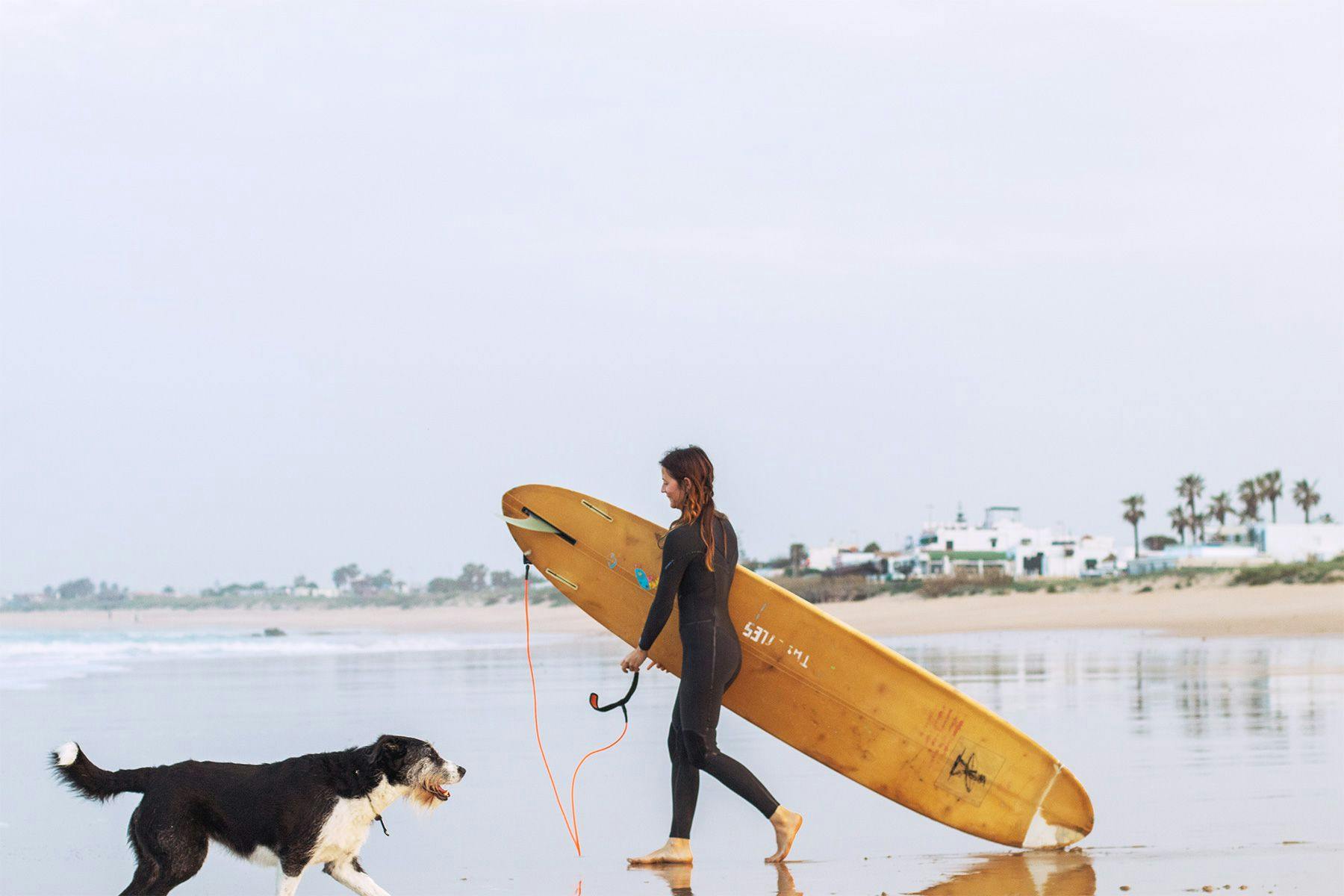
One of the bits that stood out for me in your paper was a quote by Olive, McCuaig, and Phillips (2015) saying that women “are incited to recognise and undertake the practices of the valued masculine ideal of the ‘good surfer’ through the caring acts and advice extended by male surfers”. This phrase took me back to my upbringing in a heavily localised surf spot in Southern Brazil, where the vibe in the line-up resembled that of an underground Soviet cafe, where men talked hokum and surf lore, and where women were welcomed with ogles, patronising comments, and the eventual whistle…
Maybe I’ll piss some people off with this comment, but I really think that we women don’t need men to give us a wave. I don’t need a man to say, “Go, go, paddle!” I’ll catch this wave because I want to. I don’t need you to give me space so I can surf. I know what my space is, I know what my moment is, and there is no need for you to “let me” catch the wave. That being said, I also can’t take advantage of the fact that I’m a woman to grab a wave from you. We are equals in this aspect.
Still on the topic of shifting paradigms…what are some practical steps that could be taken by everyday surfers (both women and men) to revamp this current androcentric model of reference in surfing and promote a more gender-equal atmosphere in the line-up?
Again, not being so patronising when “giving” waves. Indeed, many times this happens among men, too. But I think it’s important to eliminate this patronising sensation to help women because she needs help in the water. Women don’t need help in the water; the one who needs help is the surfer. Along those lines, I also think that it would be important to stop assuming that women need more volume in their boards or that we only know how to surf with longboards. To take it one step further, I would also say that we should get rid of the weight in the longboard scene in general. Because it seems to me that if you’re a man and you longboard, you’re “weaker”. And if you’re a woman who longboards, well, that’s what is expected of you. We expect women to use larger boards because it seems simpler when this isn’t really true; managing a longboard well also demands a lot. In fact, this notion often makes me laugh because shortboards are high-performance surfboards that way fewer people adequately equipped to surf. Not all of us are advanced surfers, and I think this is a mentality that we have to change.
From another point of view, I think the surf industry could do a lot to promote more gender equality. For instance, when it comes to the variety of garments and clothing, there is usually a lot less available for women than for men; when it comes to the size of wetsuits, women’s sizes have no specifics such as men do with Medium Tall, for example. There is also less technical clothing for women, which, by the way, is often badly designed because they don’t seem to acknowledge many of women’s necessities. Besides, the colours used tend to be very related to what is supposedly feminine – which can be good or bad. These are just some ordinary things I think the surf industry should be more mindful of.
Then, not unrelated, there is also the publicity and marketing industry, which even though it is the sphere I work in, can get a bit carried away incentivising and emphasising women’s bodies. I personally think it’s a great thing to do – women’s bodies strike me as beautiful. In this sense, I’m not against showing off women’s bodies; it can be a positive thing – if and when there is no sexist connotation, and if it’s also done for men. Bottom line, there are many things that often we, as surfers, are asked to change, but which I think that the industry has to step in and step up as well so that, culturally, we perceive and understand surfing differently. After all, the younger generation consumes the surf content that media outlets advertise, and they must be made aware of the issues within the surfing culture. In the end, I think the best practice is to apply common sense and relate to each other not based on gender but as a fellow sportsperson.
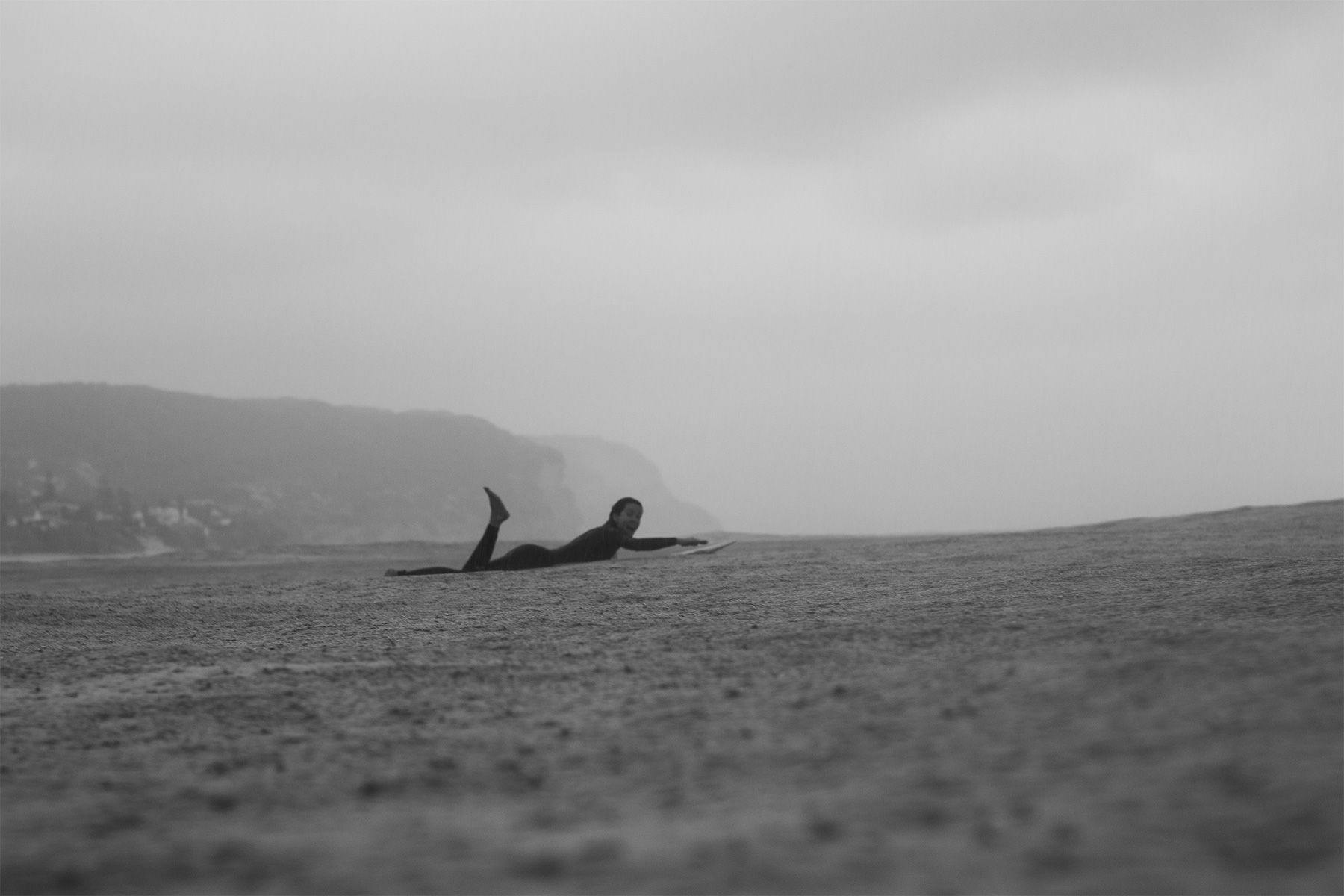
Now that you have gotten the ball rolling on this line of study, what is next?
I have many projects in mind. I’d like to carry on developing this theme, deepening the research and continuing to publish articles. I think it’s necessary. One of my main objectives is to carry on bringing surfing and academia closer together. Because, as it is the case with many other sports, when there are consolidated subjects and a body of scientific research to back up theories, there are repercussions in everyday life. So I think that bringing surfing and academia closer together can have positive consequences for surfers, for the surfing community, for the culture. Besides, this is something that stimulates me – working on issues related to surfing and women.
Another macro-project idea I have is to offer an academic course with a focus on surfing. There are several Masters, including Bachelors in Sports Management, that revolve around football and other traditional sports; but few, at least in Spain, around surfing. I would like to create the opportunity for people to graduate in this area, to develop a degree in Surf Brand Management, for instance. I hope that I’ll eventually be able to set up a group to move this idea forward. So, in a nutshell, I’d love to give surfing a more scientific backbone. It really is a very enriching, very multidisciplinary sport, and I believe it has many things to offer to the scientific world.
To wrap it up, how do you see the performance of women evolving in the future? What do you expect/hope/imagine will happen to this feminine style of surfing?
I think there will be a change in the future, but that this change will happen slowly and it will take a long time for us to become aware of it. The way I imagine it, the current trend will continue and, fortunately, there will be more girls in the water. And not only women – many more people in general. It’s not only the white male surfing anymore. Surfing is democratizing, and I believe that is the trendÍ. But I don’t think we will see a tangible change concerning this hegemony of men in surfing any time soon. I reckon it will take a long time for women to “impose” their style, then a little longer for this new style to be democratized. The tendency is positive and there will be a change; we’ll simply reach a point when there will be so many different people surfing that this will come to happen. But I think it’s going to be something that happens slowly.
*****
The author and Surf Simply would like to thank Paloma for her time and assistance, as well as the photographers @cokoif and @alesellers for providing the imagery for the article. To explore Paloma’s work, check her Google Scholar page, or follow her on Instagram to keep up to date with her surfing in Cadiz.